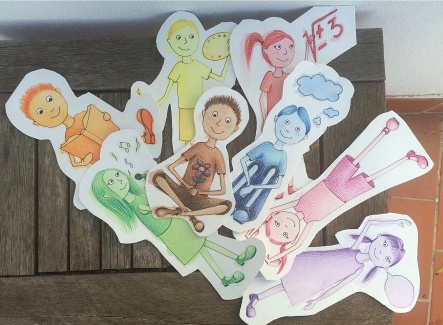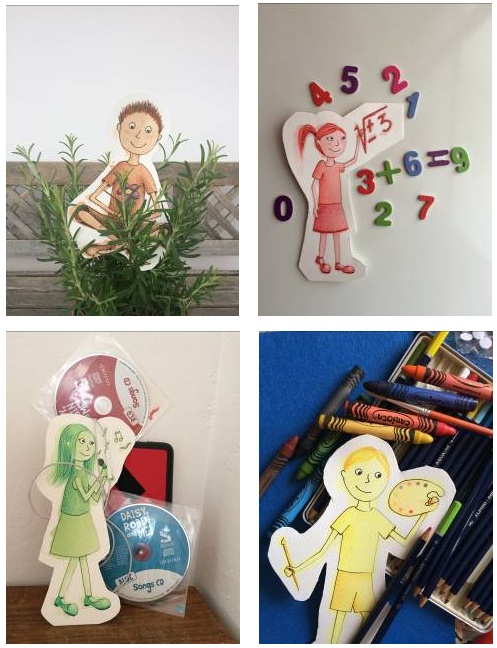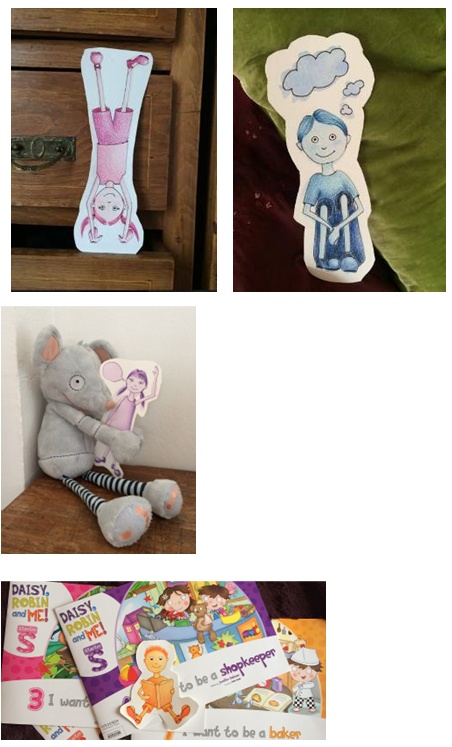Multiple Intelligences for Young Learners with Visual Materials
Hanna Kryszewska, Poland, Jennifer Dobson and Julia Mena Dobson, Spain,
Menu
Background
Some ideas
More ideas

The Theory of Multiple Intelligences, which provided a model of how we learn, has been present in education, including English Language Teaching (ELT), since 1983. It was developed by the Project Zero team at Harvard University, and, initially, it was a tool that was only really known to educators. Gradually learners also became familiar with the idea, finding that it helped them reflect on their own strengths, gain a new learning tool and insight into the activities they engage in.
These visual materials for Multiple Intelligences have been created by Julia Mena Dobson, and have been given to the C group, in memory of Bonnie Tsai, for any teachers who might like to use them. They can be used as flashcards, cut-outs, wall displays or pencil puppets, to name just a few.
Due to the nature of the visual materials, the activities branch out into a teaching approach promoted by recent developments by Project Zero called ‘Making Thinking Visible’. In this approach learners analyse and reflect on their own learning on a regular basis.
You can download scans of the drawings from here: image 1, image 2, image 3, image 4, image 5, image 6, image 7, image 8.
Zlinkuj do skanów, które zrobimy/scans to come
Here is a formal list of the intelligences for the teacher:
- Musical–rhythmic and harmonic
- Visual–spatial
- Verbal–linguistic
- Logical–mathematical
- Bodily–kinaesthetic
- Interpersonal
- Intrapersonal
- Naturalistic
With young learners the intelligences are often defined in the following terms.
- Music-Sound Smart
- Picture Smart
- Word Smart
- Logic-Maths Smart
- Body Smart
- People Smart
- Self Smart
- Nature Smart
You may need to use the mother tongue to introduce the concept before switching to English.
- Show the images to your learners. Ask them to brainstorm what each of the characters in the visual material likes doing.
- Expand on the above by placing flashcards of the different characters around the wall. Give out sticky notes to your learners. Ask them to think about what each of the characters likes to do, and to write this, or draw a picture on the note. The learners then place their notes by the characters. The display can be permanent and updated on a regular basis.
- Ask your learners which characters in the images they most identify with and encourage them to explain why.
- Invite the learners to set the characters in the images in a context, to personify them or decorate them so that they illustrate the nature of their intelligence or preferences, for example, see the images below:


- After completing a language activity in class, for example, a game, a reading text, listening, role-play or picture activity, invite learners to say which of the characters in the images ‘were involved’.
- Use the cut-outs of the images to make pencil puppets. Create a mini role play between the characters to talk about the things they like or dislike.
- Display one of images and encourage your learners to give ideas how they have used the given intelligence on the day of the lesson so far.
For example, for mathematical, they might say - two shoes in the morning, one backpack, two sandwiches for lunch, five bus stops to get to school, ten people in class, one teacher, etc.
For interpersonal, they might say - my father and I, my mum and I, my classmates and I, my teacher and I, etc.
For naturalistic, they might say - some birds, one black one grey, different trees, grass and weeds, etc.
Hopefully these ideas will inspire you and encourage you to create your own activities. It would be great if you decided to publish them in HLT, in the C Group section if you are a member. Get in touch with hania.kryszewska@pilgrims.co.uk

Please check the Teaching English Through Multiple Intelligences coure at Pilgrims website.


|